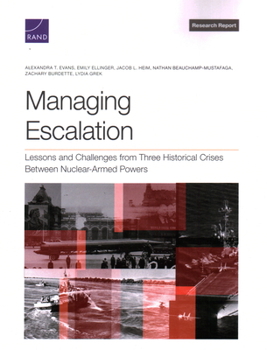Managing Escalation: Lessons and Challenges from Three Historical Crises Between Nuclear-Armed Powers
The return of great-power competition has highlighted the risks of conflict with nuclear-armed great powers. Such a conflict would entail escalation risks that the United States has not seriously considered since the Cold War. Using three historical case studies, the authors examine decisionmakers' ability to identify adversary thresholds and to apply this information to control escalation during militarized crises between nuclear-armed states.
Format:Paperback
Language:English
ISBN:1977412912
ISBN13:9781977412911
Release Date:February 2024
Publisher:RAND Corporation
Length:126 Pages
Weight:0.78 lbs.
Dimensions:0.3" x 8.5" x 11.1"
Customer Reviews
0 rating





